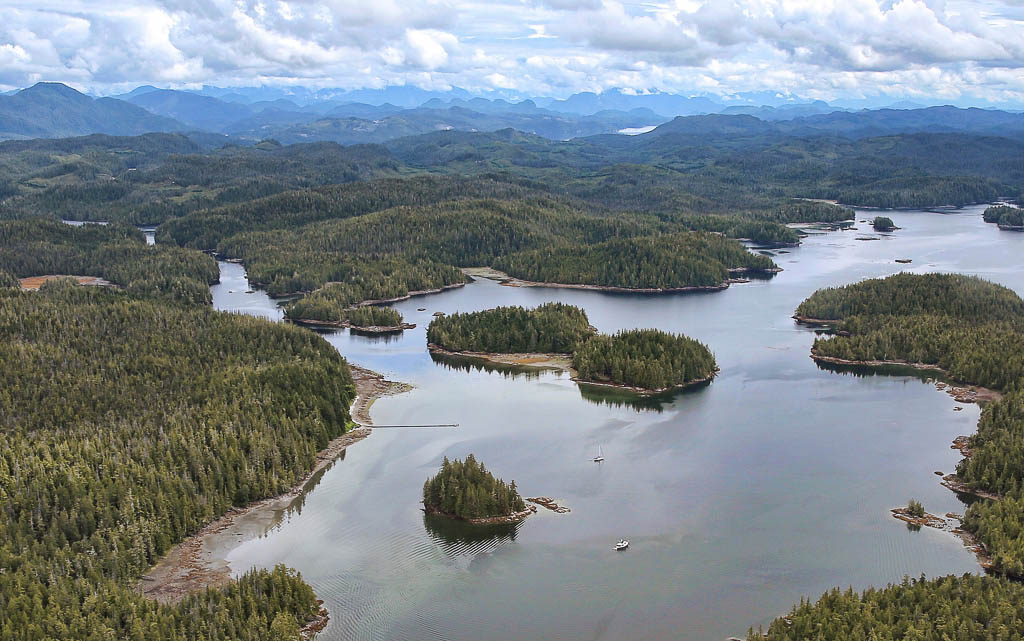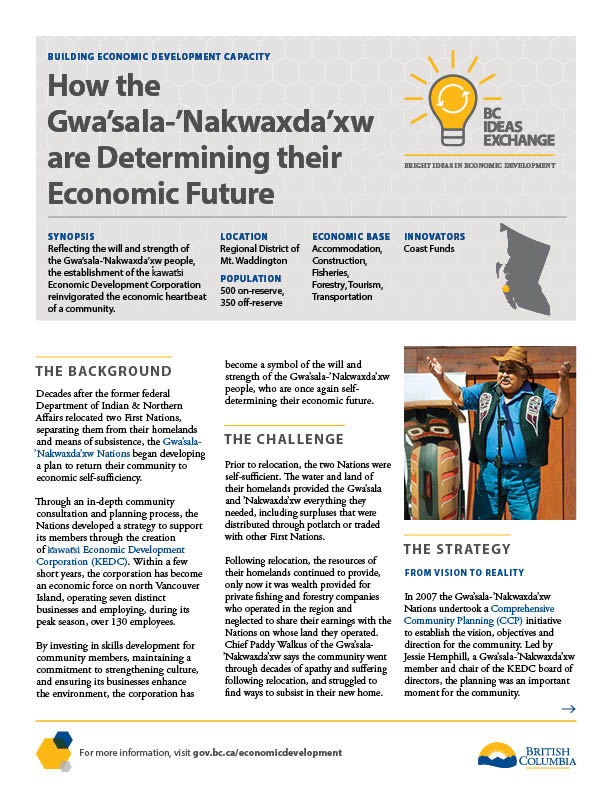How the Gwa'sala-'Nakwaxda'xw are Determining their Economic Future
Tsulquate
Decades after the former federal Department of Indian & Northern Affairs relocated two First Nations, separating them from their homelands and means of subsistence, the Gwa'sala-'Nakwaxda'xw Nations began developing a plan to return their community to economic self-sufficiency.
Through an in-depth community consultation and planning process, the Nations developed a strategy to support its members through the creation of k̓awat̕si Economic Development Corporation (KEDC). Within a few short years, the corporation has become an economic force on north Vancouver Island, operating seven distinct businesses and employing, during its peak season, over 130 employees.
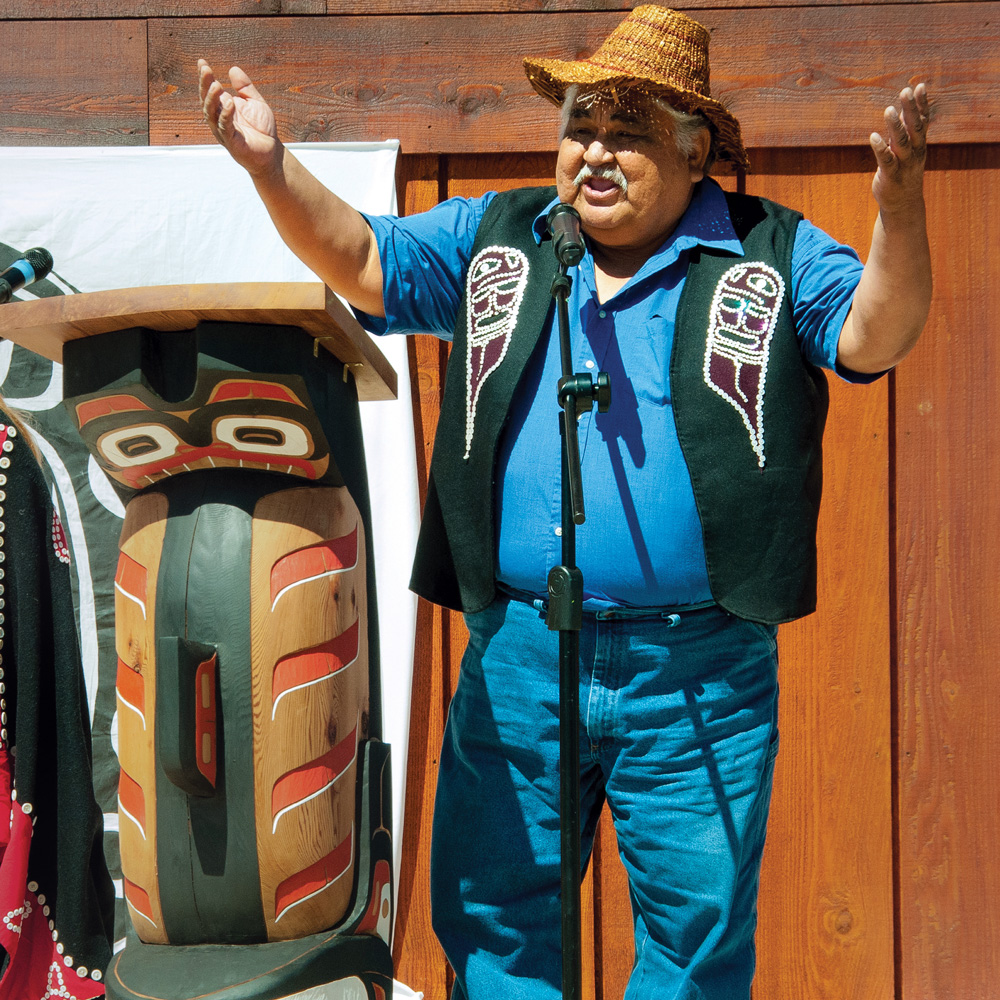
By investing in skills development for community members, maintaining a commitment to strengthening culture, and ensuring its businesses enhance the environment, the corporation has become a symbol of the will and strength of the Gwa’sala-’Nakwaxda’xw people, who are once again self-determining their economic future.
The Challenge
Prior to relocation, the two Nations were self-sufficient. The water and land of their homelands provided the Gwa’sala and ’Nakwaxda’xw everything they needed, including surpluses that were distributed through potlatch or traded with other First Nations.
Following relocation, the resources of their homelands continued to provide, only now it was wealth provided for private fishing and forestry companies who operated in the region and neglected to share their earnings with the Nations on whose land they operated. Chief Paddy Walkus of the Gwa’sala-’Nakwaxda’xw says the community went through decades of apathy and suffering following relocation, and struggled to find ways to subsist in their new home.
The Strategy: From Vision to Reality
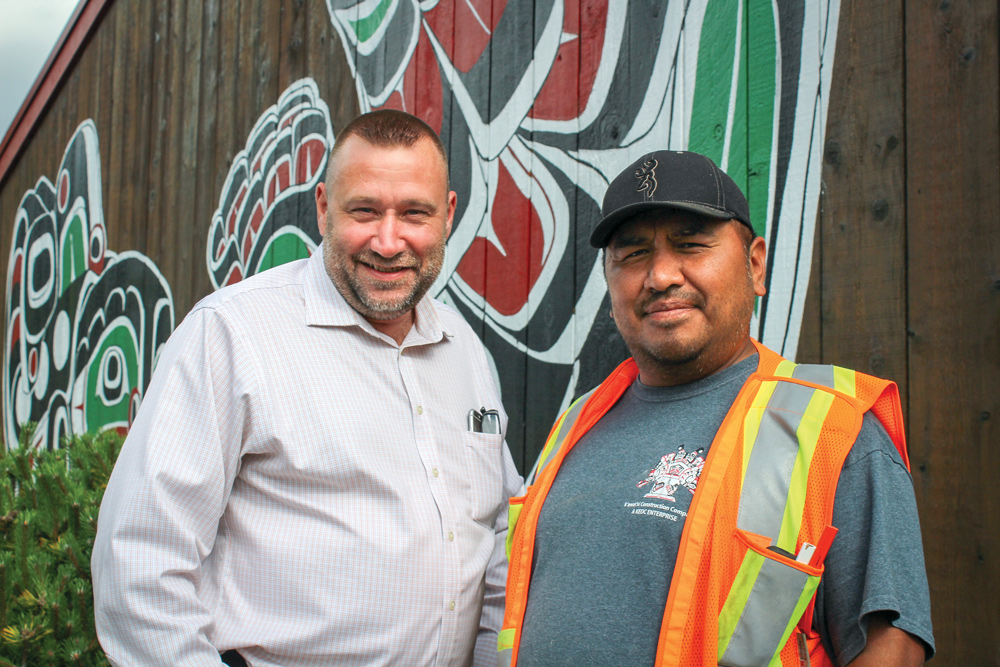
In 2007 the Gwa’sala-’Nakwaxda’xw Nations undertook a Comprehensive Community Planning (CCP) initiative to establish the vision, objectives and direction for the community. Led by Jessie Hemphill, a Gwa’sala-’Nakwaxda’xw member and chair of the KEDC board of directors, the planning was an important moment for the community.
Through the CCP, the community envisioned a return to the self-sufficiency it experienced prior to relocation: a community where everyone who wants to work can find a meaningful job.
Hemphill says the strength of the final CCP document lies in how well it captures the voice of the community. “The vision really came from them,” Hemphill says. “We had really active Elders, really active children and youth that took part. So, the final document was a really good representation of that.”
The planning process proved invaluable to Conrad Browne, CEO of KEDC, when, in 2010, he set to work making the community’s vision a reality. “It was a very good place to start work,” says Browne. “Everything that was important to the First Nations was included in this amazing document.”
Browne began by supporting Chief and Council to create a strategic plan that would lay out how the Nations could achieve their economic goals. To develop the plan, Hemphill and Browne again worked in close consultation with the community, including several meetings with youth and Elders.
The strategic plan, when it was completed, laid out a step-by-step plan to “create, operate and support businesses that will be profitable, environmentally sustainable and culturally significant, while respecting our unique cultural values, and upholding the pride and well-being of the Gwa’sala-’Nakwaxda’xw people.”
After years planning and engaging with the community, Browne began engaging several contractors to support the Gwa’sala-’Nakwaxda’xw Nations as they developed KEDC. He enlisted Meyers Norris Penny to help establish the corporate structure that would ensure Council has no direct involvement in business management, thus protecting their assets from risk in case of liability.
To ensure best communication practices, Browne worked with FleishmanHillard on a communications plan. Browne says that building in two-way communication to all aspects of the corporation’s work helped them gain the trust and support of the community during a time of rapid growth and change.
In December 2014, k̓awat̕si Economic Development Corporation officially incorporated, and the following month they were in business.
Successes: Creating Community-Supporting Businesses
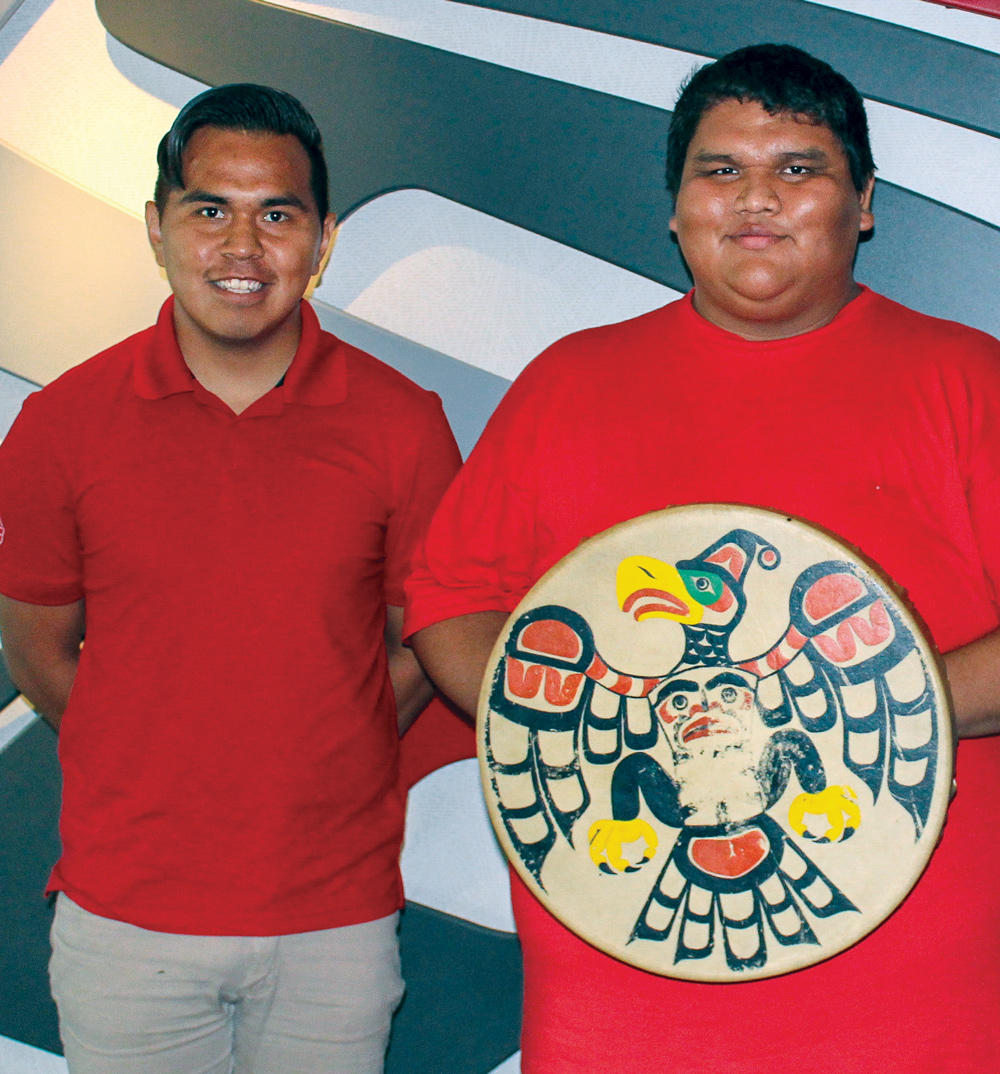
Over the three and a half years that have passed since incorporation, KEDC has seen substantial growth. “We started with one person and one boat and at the highest part of our season [in 2017] we had 130 employees across seven distinct businesses,” says Browne. “They’ve been working their tails off for the last few years to make us into a profitable corporation with multimillion-dollar revenue.”
Chief Walkus has led the Gwa’sala-’Nakwaxda’xw Nations for the last 35 years. He sees the work being accomplished by KEDC as a source of inspiration for his community. “I really believe it provides a lot of drive, especially in our young people,” Walkus says. “They’re looking beyond the current horizons, and that is exciting for all of us.”
Lessons Learned
After years of planning, engaging, strategizing and implementing, the Gwa’sala-’Nakwaxda’xw have a successful economic development corporation to drive growth in their community, provide jobs for locals, revitalize culture and help reconnect members to their homelands. They have learned much along the way and offer the following advice:
- Engage with the community, Chief and Council, and Elders
- Use external experts for their experience and expertise
- Communication is essential to planning, strategy and development
- Invest in staff and personnel to create a strong-skilled community
This article appears courtesy of Coast Funds, and a full version of the story can be viewed on their website.
About Coast Funds
Coast Funds was created to support First Nations in achieving their goals for sustainable economic development and conservation management in the Great Bear Rainforest and Haida Gwaii. Coast Funds has approved $78.5 million toward 337 conservation and sustainable economic development projects.
Contact Information
For more information about Coast Funds, visit coastfunds.ca.
Population: 500 on-reserve, 350 off-reserve
Region: Regional District of Mt. Waddington
Economic Base: Accommodation, Construction, Fisheries, Forestry, Tourism, Transportation
Coast Funds supports First Nations in achieving their goals for sustainable economic development and conservation management in the Great Bear Rainforest and Haida Gwaii.

